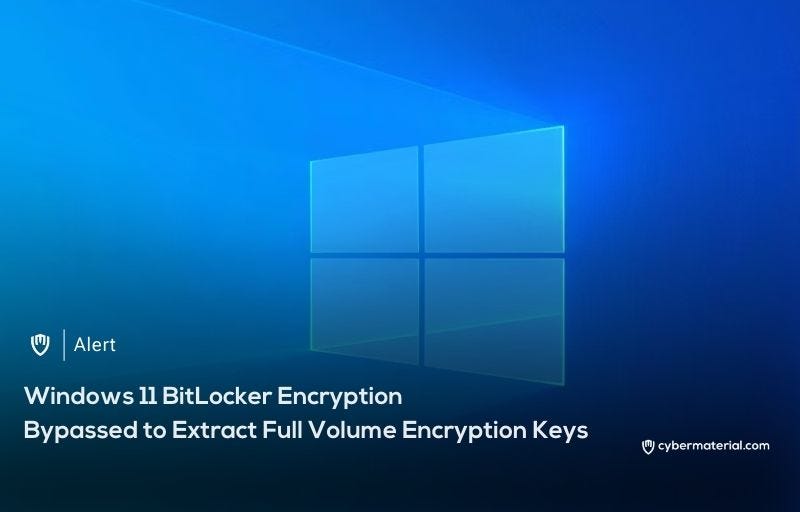
Researchers have recently demonstrated a method that successfully bypasses Windows 11’s BitLocker encryption, exposing Full Volume Encryption Keys (FVEKs) directly from the system’s memory. This attack highlights the risks associated with physical access vulnerabilities, where an attacker, once in possession of a device, can exploit the system’s memory to extract encryption keys that should be securely stored. Since encryption keys are temporarily held in RAM during operation, they can be recovered if power is preserved long enough to dump the system’s memory contents.
The process begins by capturing the system’s memory during critical moments, such as restarting the system before reaching the login screen. Attackers create a bootable USB drive with specialized software designed to extract memory dumps, then force a reboot while bypassing Secure Boot mechanisms. With the system restarted, the USB boots into a custom UEFI shell, allowing the attacker to extract and analyze the memory, pinpointing the FVEK stored in kernel memory pools, typically identified by the dFVE tag.
Despite Windows’ built-in safeguards, such as Secure Boot, the attack proves successful through the use of bypass techniques like shims, which load custom tools for memory analysis. The researchers demonstrated how, even with memory scrambling and encryption protections in place, residual encryption keys could remain in volatile memory, making them vulnerable to attackers with physical access. The study revealed that, under specific conditions, encryption keys could be exposed with high accuracy, further revealing the gap between encryption theory and practical security.
To mitigate such risks, the researchers suggest employing hardware-based security features like Trusted Platform Module (TPM), which can provide additional layers of key protection. Physical security measures, including preventing unauthorized access to devices, also play a critical role in thwarting these types of attacks. As this demonstration shows, no encryption system is entirely foolproof, especially in scenarios where attackers can manipulate the system’s hardware. As a result, Microsoft may need to enhance key management techniques to protect sensitive data from exposure during memory dumps.
Reference:
The post Windows 11 BitLocker Encryption Bypassed first appeared on CyberMaterial.


